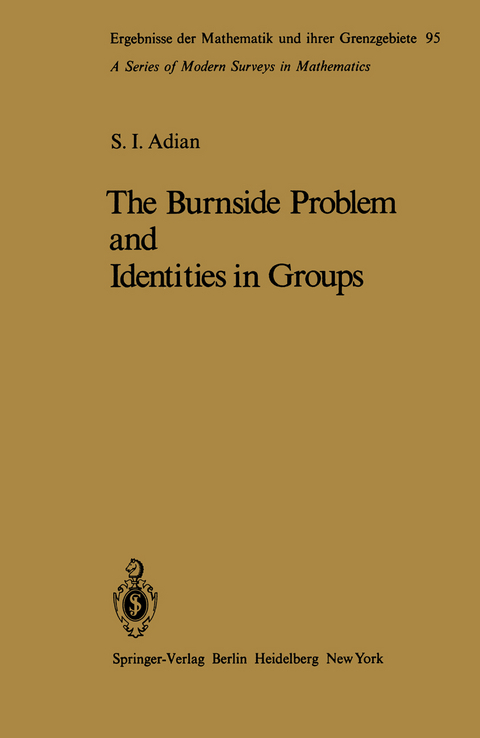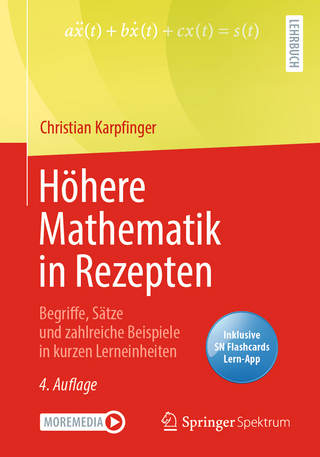
The Burnside Problem and Identities in Groups
Springer Berlin (Verlag)
978-3-642-66934-7 (ISBN)
I. Basic Concepts and Notation.-
1. Words and Occurrences.-
2. Periodic Words.-
3. Aperiodic Words.-
4. Inductive Definitions.-
5. Symmetry and Effectiveness.- II. Periodic and Elementary Words of Rank ?.-
1. Periodic Words of Rank ?.-
2. Integral Words and Generating Occurrences of Rank ?.-
3. Minimal and Elementary Periods of Rank ?.-
4. Periodisation.-
5. Elementary Words of Rank ?.-
6. Local Properties of Normalisability.-
7. Completely Regular Occurrences of Rank ? - 1 and Further.- Properties of Elementary Words.- III. Reversals of Rank ?.-
1. Elementary Properties of Reversals.-
2. Stable Occurrences and Local Reversals of Rank ?.-
3. Cascades and Real Reversals.- IV. Reduced Words and Equivalence in Rank ?.-
1. Kernels and Reduced Words of Rank ?.-
2. Equivalance in Rank ?.-
3. Mutually Normalised Occurrences.- V. Coupling in Rank ?.-
1. Properties of the Operation of "Coupling".-
2. Further Properties of Equivalent Words.- VI. Periodic Groups of Odd Exponent.-
1. Existence of Infinite Periodic Groups of Odd Exponent.-
2. Systems of Defining Relations for a Free Group of Finite Exponent.-
3. Subgroups of a Free Group of Finite Exponent.- VII. Further Applications of the Method.-
1. Non-Abelian Groups in which Every Pair of Cyclic Subgroups Intersect Non-Trivially.-
2. Infinite Independent Systems of Group Identities.- References.- Index of Notation.
| Erscheint lt. Verlag | 16.12.2011 |
|---|---|
| Reihe/Serie | Ergebnisse der Mathematik und ihrer Grenzgebiete. 2. Folge |
| Übersetzer | John Lennox, James Wiegold |
| Zusatzinfo | XII, 314 p. |
| Verlagsort | Berlin |
| Sprache | englisch |
| Maße | 170 x 244 mm |
| Gewicht | 574 g |
| Themenwelt | Mathematik / Informatik ► Mathematik ► Algebra |
| Schlagworte | Burnsidesche Vermutung • Gruppe (Math.) |
| ISBN-10 | 3-642-66934-4 / 3642669344 |
| ISBN-13 | 978-3-642-66934-7 / 9783642669347 |
| Zustand | Neuware |
| Informationen gemäß Produktsicherheitsverordnung (GPSR) | |
| Haben Sie eine Frage zum Produkt? |
aus dem Bereich


